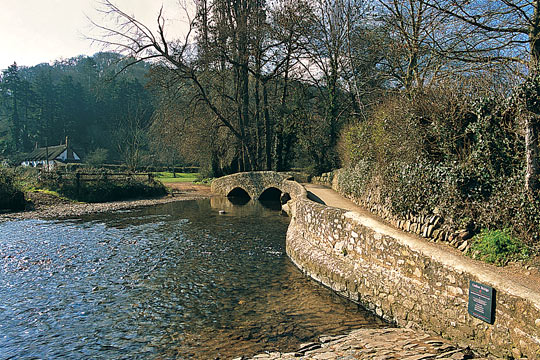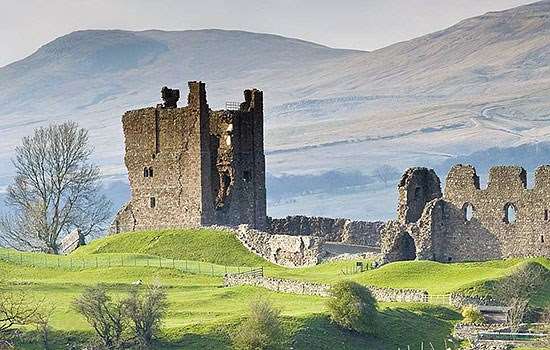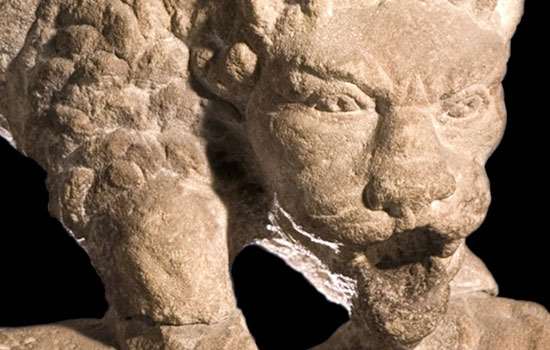History of Dunster Gallox Bridge
Gallox Bridge is a fine example of a medieval packhorse bridge used to transport wool across the river Avill for sale in the market town of Dunster.

The medieval wool trade
In the Middle Ages wool was England’s chief export, and the source of much of the country’s wealth. Taxes on wool exports paid for Edward I’s conquest of Wales and his near conquest of Scotland.
At this time Dunster flourished as a market and port for wool, fleeces being brought down from the moor to be sold there. Many of them were carried by packhorse across the river Avill via Gallox Bridge, originally the main route into Dunster from the south.
The name of the bridge
The bridge is first mentioned in a document of 1475 but is almost certainly older than this. The next bridge along the road into town (a little to the north, crossing the mill stream) is first recorded a century earlier as ‘Doddebruge’, Dod Bridge.
This bridge is consistently referred to as Gallox Bridge, in a variety of spellings such as Gallocksbrigge, Gallox Bridge or Gallocks Bridge. The name derives from the gallows that stood on a hill outside the town. The gallows were a symbol of the authority of the lords of Dunster Castle, who had the right to try and hang any thief caught within the area of their jurisdiction.
Description of the Bridge
The bridge is 1.2 metres (4 feet) wide and 10.5 metres (32 feet) long, and has two slightly pointed arches. Each side of each arch has narrow chamfered stone ribs. On the upstream (west) face of the bridge, a stone ‘cut-water’ guides the river current through the two arches. On the town (north) side, the bridge parapet is continued along the footpath for some way beside the river, in order to prevent flooding.
On the same side of the bridge, traces of an earlier and slightly wider footpath can be seen (below the parapet) – evidence of the repairs and adaptations that have been carried out over the centuries.
Alongside the bridge is an ancient ford – probably older than the bridge – for wheeled traffic. The bridge and ford functioned together: pedestrians and packhorses (with their wool fleeces) using the bridge, and carts driving through the ford. Bridge and ford are still in use today, an integral part of the medieval landscape of Dunster.
Further Reading
Historic England entry for Dunster Gallox Bridge
Jervoise, E, The Ancient Bridges of the South of England (London, 1930)
Pevsner, N, The Buildings of England: South and West Somerset (Harmondsworth, 1958)
Victoria County History of Somerset: the Dunster volume is not yet published (2018) but a draft version is available online (accessed 22 May 2018)


